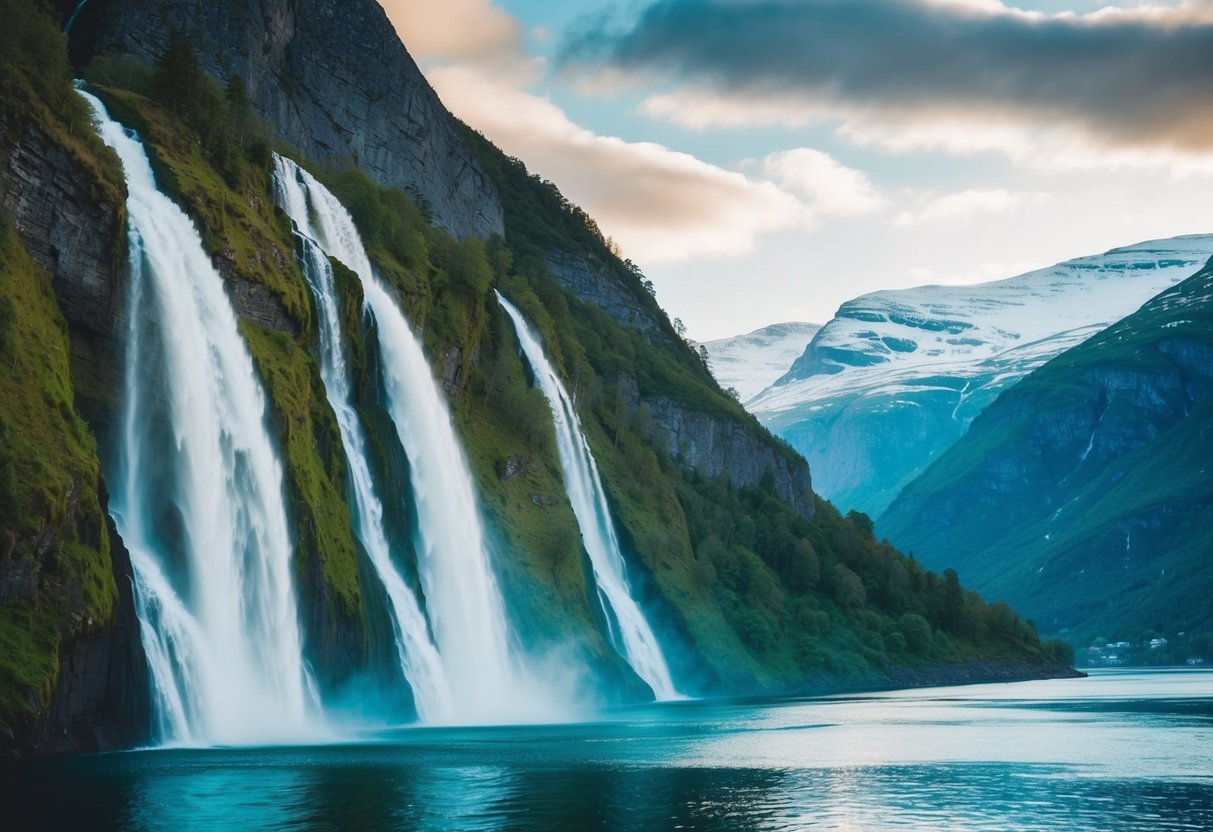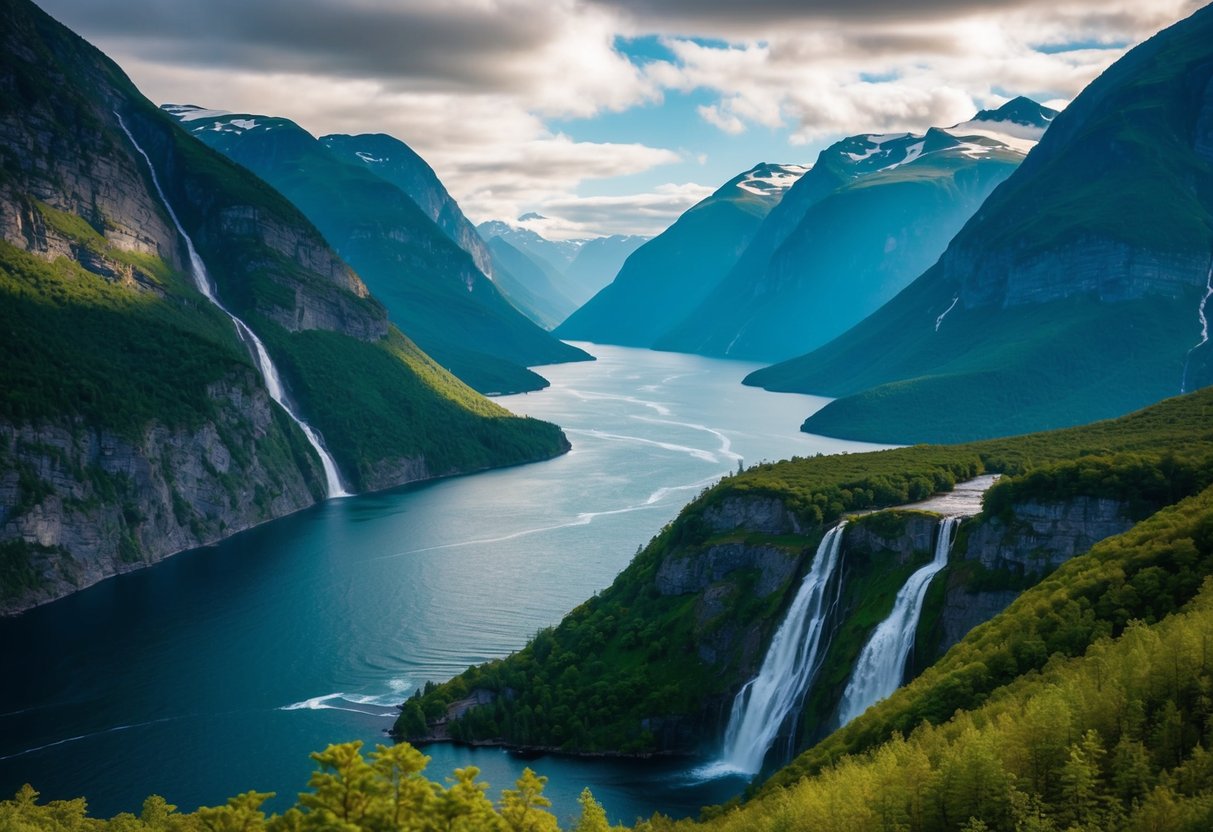
Norway’s fjords offer breathtaking views that captivate all who visit. Towering mountains flank the deep blue waters, where pristine waterfalls cascade in majestic displays of nature’s beauty. The true allure of Norway’s fjords lies in their serene combination of stunning natural features and the peaceful environment they create.
These fjords are celebrated not just for their visual appeal. Each fjord tells a story thousands of years in the making, carved by glaciers and immortalized in local folklore. Travelers will find themselves immersed in a landscape where the air is pure, and the scenery is untouched.
A trip through this scenic wonderland reveals endless opportunities for adventure. Whether by boat, on foot, or through a leisurely drive, the fjords promise an unforgettable experience, unmatched anywhere else on earth. Norway invites explorers to witness the spectacular interplay of water, rock, and sky in this magical realm.
The Geology of Norwegian Fjords

Norwegian fjords are majestic landscapes shaped by ancient glaciers. These powerful forces carved deep, narrow inlets surrounded by steep mountains, creating some of the most breathtaking scenery on the planet.
Formation of Fjords
Fjords originated from glaciation processes during the Ice Age. Massive glaciers moved slowly, carving deep valleys into the Earth’s crust. As the glaciers retreated, seawater flooded the valleys, forming the fjords observed today. These formations often extend far inland and can plunge to remarkable depths. The Sognefjord is a prime example, being the deepest fjord in Norway, reaching depths of over a thousand meters. The creation of fjords highlights both the power and patience of nature, crafting landscapes over millennia.
Types of Fjords
Several types of fjords can be found in Norway, each with distinct features. The Geirangerfjord is renowned for its dramatic waterfalls and steep cliffs, offering an awe-inspiring visual experience. Another example, the Nærøyfjord, is noted for its narrow, winding passages, providing an intimate view of towering mountains. The Hardangerfjord, known for its fruit trees, presents a picturesque combination of nature and cultivation, while the Nordfjord showcases a stunning blend of glacier views and mountain peaks. Each type of fjord offers a unique glimpse into the geological history and vibrant natural environment of Norway.
Iconic Fjords and Natural Attractions
Norway’s fjords are renowned for their breathtaking landscapes and rich cultural significance. These natural wonders are not just scenic vistas but also home to impressive attractions like towering waterfalls and majestic rock formations.
Geirangerfjord and the Seven Sisters
Geirangerfjord is one of Norway’s most famous fjords, captivating visitors with its dramatic cliffs and crystal-clear waters. A highlight within this fjord is the Seven Sisters waterfall, which features seven separate streams cascading down a steep mountainside. These waterfalls create an ethereal setting, particularly striking when sunlight catches the cascades, creating shimmering rainbows.
Visitors to Geirangerfjord often enjoy boat tours, allowing close-up views of the waterfalls and the surrounding cliffs. With its serene atmosphere and natural beauty, Geirangerfjord provides an unforgettable experience for those seeking to witness nature’s grandeur.
Nærøyfjord: A UNESCO World Heritage Site
Nærøyfjord, part of the West Norwegian Fjords, holds the distinction of being a UNESCO World Heritage Site. This fjord is celebrated for its narrow passages, flanked by mountains rising over a thousand meters from the water. Such dramatic landscapes offer a sense of scale and wonder that few places can match.
The fjord’s pristine environment is maintained through strict regulations, ensuring the protection of its unique flora and fauna. Nature enthusiasts and photographers are drawn to Nærøyfjord’s diverse wildlife and the serene beauty of its reflective waters. Whether by kayak or ferry, exploring this fjord offers a glimpse into an unspoiled world.
Lysefjord and Pulpit Rock
Lysefjord is noted for its stunning geological formations, with Pulpit Rock (Preikestolen) being its most famous landmark. This flat-topped cliff rises nearly 600 meters above the fjord, offering breathtaking panoramic views for those who make the hike to its summit. The journey is a rewarding challenge, attracting climbers and hikers from all over the globe.
Visitors often remark on the sheer drop from Pulpit Rock and the sweeping vistas that extend into the horizon. Beyond the exhilarating climb, the surrounding Lysefjord area offers additional opportunities for exploration, including boat tours and scenic drives that highlight the region’s rugged beauty.